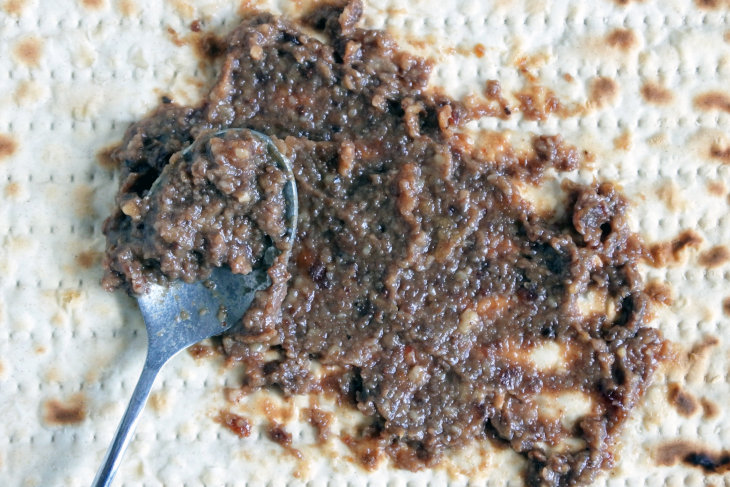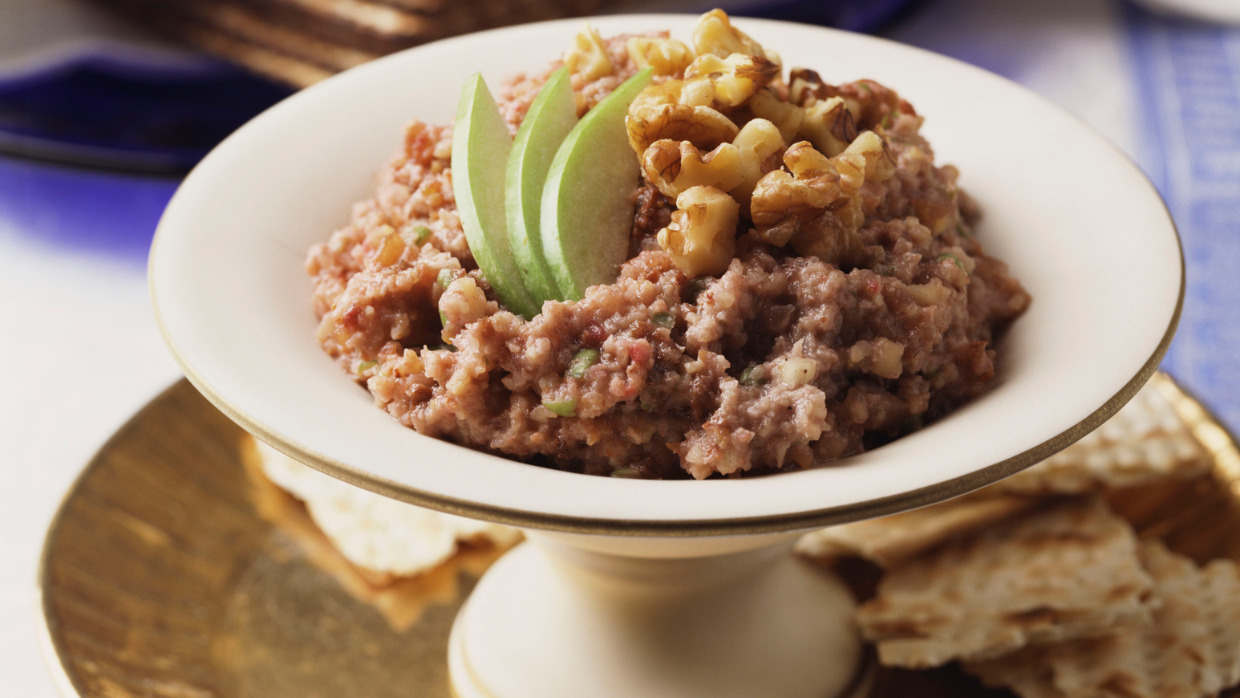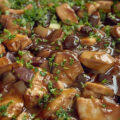On a night full of bitter, salty, dry, and spicy foods we wouldn’t typically let near our table, Charoset stands out on the Seder Plate as a sweet and fruity spread to look forward to.
But how Charoset became a staple of the Seder experience is a matter of debate. Nowhere in the Torah is there a commandment to eat it, neither is it mentioned in the Passover Haggadah. Yet its connection to Passover is ancient.
Charoset in Ancient Times
Dating back to the days of the Babylonian Talmud, Jews incorporated Charoset into their Seder meals. “They bring before him matzah, lettuce, charoset, and two cooked dishes, even though charoset is not obligatory. Rabbi Eliezer bar Tzadok says: Charoset is obligatory. (Mishnah Pesachim 10:3)”
Scholars have noted that in ancient Israel and in the Hellenistic world at large, Charoset wasn’t reserved for the “Night Unlike All Other Nights.” It was served as an appetizer at banquets and festive meals. It’s speculated that it was served alongside the Paschal lamb as a sweet accouterment and only explained later on by Babylonian sages who had no context for this custom.
The First Charoset
The oldest Charoset recipe we still have in possession is from the great medieval Jewish philosopher Sa’adia Gaon that he scribbled on to his prayer book. He writes that “one should prepare a dipping sauce from dates and walnuts and sesame, and knead it together with vinegar.”
It’s hard to know what his recipe would taste like, but it’s similar to many sephardi recipes for charoset.
Reasons For Charoset
The traditional explanation for eating Charoset on Passover is that it represents the mortar that was used by the Israelites while making bricks for the Pyramids in ancient Egypt. This helps explain its unusual viscosity and chunky texture. Its addition, sweetness on the Seder plate is especially important because it’s typically eaten alongside the Bitter herb (maror). This combination helps bring to light the two emotions one should have on Seder night. On the one hand there’s the bitterness of slavery and on the other, we celebrate the sweet taste of freedom.
Charoset comes from the word Cheres, which means clay in Hebrew.
Conversely, Rabbi Levi sees the charoset’s use of apples as a way to commemorate the “legend of the apple tree.” This is a reference to a Jewish urban legend that describes how the exodus of the Israelites from slavery began with two miraculous apple trees. Following Pharaoh's decree that all first-born boys were to be thrown into the river, expectant Israelite mothers would go to apple orchards and pray for a safe birth.
In another legend, due to the looming threat of the Egyptians, Israelite men were reluctant to have relations with their wives. So to ensure the future of the Jewish people,
their wives would bring them to apple trees and seduce them.
These two explanations, says Jill Hammer, director of spiritual education at the Academy for Jewish Religion in New York, show how Charoset is “a dual symbol of birth and death, freedom and oppression,” the remembrance of what binds “the Jewish story with the story of all living things…a kind of mortar after all.”
The apple tree explanation serves to celebrate our redemption from bondage but on the other hand, the mortar explanation helps to rekindle the harsh memories of slavery. This balancing act is what lies at the heart of Charoset.
Charoset Health Benefits
Another explanation given in the Talmud is that Charoset had health benefits that prevented food-borne illnesses that were common at the time which is why it was a good way to ward off possible worms or pests that may have infested the leafy bitter herb. Nowadays there's not much of a fear of pests and parasites in our horseradish but Charoset's health properties don't end there.
By putting the sour flavor of the apples on the bitter herb it helps reduce flatulence. It’s suggested by modern thinkers that Charoset’s was originally made to prevent seder guests from farting when eating the bitter herbs.
Additionally, the apples in Charoset provide Quercetin, an extremely potent flavonoid with anti-cancer properties. Paired with red wine and cinnamon helps lower cholesterol and reduce the risk of cardiovascular disease.
Charoset in the Civil War
Charoset has found its way to many of the most important Seders in Jewish history. One such memorable Seder happened in the midst of the American Civil War. In a Jewish newspaper from the 1860s Joseph Joel shared his Passover story. Joel and his Ohio regiment were traveling through the “wilds of West Virginia” in 1862. Joel and the other Jews serving the Union were looking to celebrate the Seder during the heat of battle. The men in his regiment were able to acquire matzos and Haggadahs and foraged deep in the forest for a weed “whose bitterness…exceeded anything our forefathers enjoyed,” paired with lamb, chicken and eggs they were ready for a night to remember. But no matter how hard they looked they could find no suitable ingredients for charoset. “So, we got a brick,” Joel wrote, “which rather hard to digest, reminded us, by looking at it, for what purposes it was intended.”
Charoset in other Cuisines

In the wide world of Jewish cuisine Charoset takes on several different shapes and sizes. Syrian Charoset is the perfect way to change up your traditional Charoset recipe. Using a base of dates and walnuts and Red wine, Syrians created a thick paste very reminiscent of mortar. Some traditions incorporate orange peel as well for a fresh springy flavor.
Persian Charoset on the other hand is all about the aromas. Also known as Hallaq, the Iraqi preparation of Charoset reflects the wide variety of fruits and flavors at their disposal. In Persian Charoset you can find dates, bananas, pears, oranges all working together in harmony with Cardamom.
Yemenites have a custom where rather than dipping their Karpas (spring herb) into salt water, they dip it into Charoset instead. Yemenite Charoset includes flavors like cloves and pepper to add a kick to their Charoset. Other traditions involve adding coconut, or figs and Italian Jews even add chestnuts to theirs.
A Surprising Use for Charoset
Over the years several clever Jewish chefs have found unique uses for the flavorful paste. Back in 2015, Ben and Jerry’s decided to come out with a new flavor of their world-famous recipe, this time flavored with Charoset. All the wine, spices, and chopped fruits made their way into the pint making it a massive success in Israel.
Read more about how to make charoset including 9 different recipes for charoset.


















Excellent...now hungrey for MORE Haroset in all varieties.
Thank you!